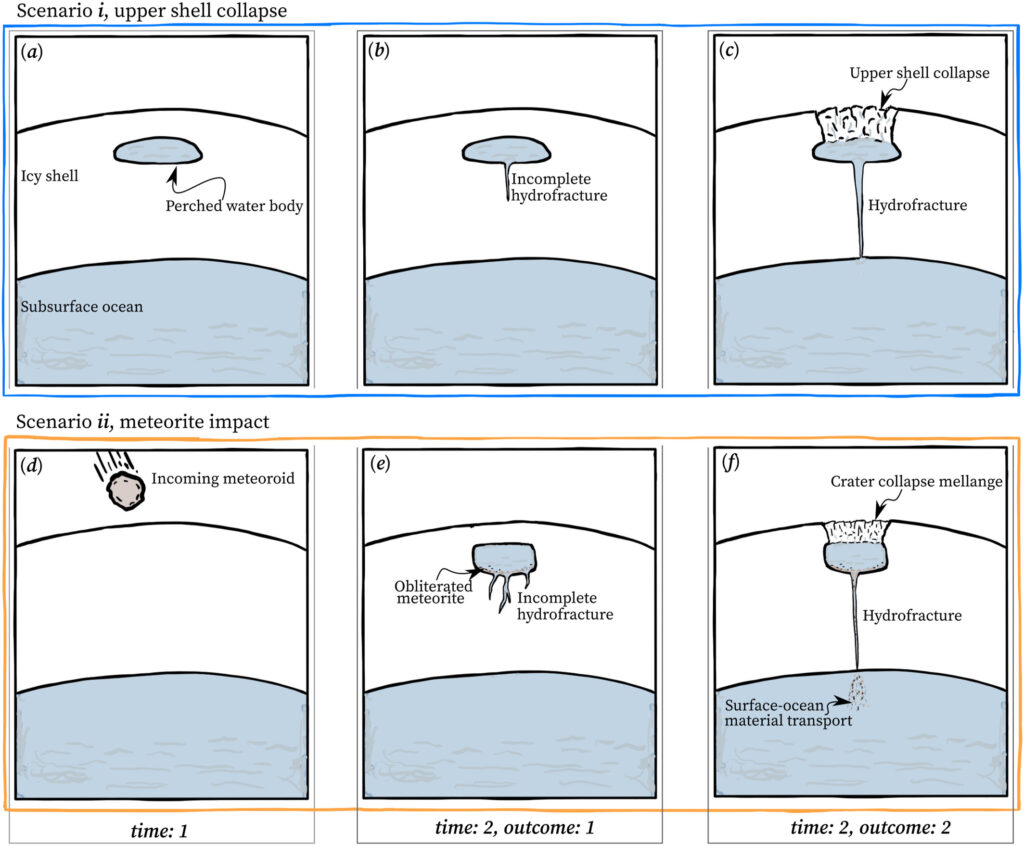Editors’ Highlights are summaries of recent papers by AGU’s journal editors.
Source: Journal of Geophysical Research: Planets
Lakes that form on top of glaciers on Earth (called supraglacial lakes) have been observed to drain downwards when a fracture forms. The fracture may further propagate through a process called hydrofracturing, where additional pressure is caused by the weight of the overlying water.
Europa is a moon of Jupiter with a subsurface ocean under an outer icy lithosphere that is likely tens of kilometers thick. Taking this glacial lake analogy to Europa, Law [2025] investigates whether this process was likely to play a role in perched water bodies in Europa’s icy shell. The perched water bodies, those formed inside of the ice shell, could be created through either convective upwellings in Europa’s icy shell or through an impact to the surface.

The author concludes that downward hydrofracture and drainage of liquid water from perched water bodies on Europa are possible if the overlying ice lithosphere is thin or mechanically weak. Such a condition might occur if there is a perched water body below a broken-up region of crust (called chaos regions on Europa) or shortly after an impact crater forms.
If hydrofracturing is possible, this may provide a means to transport melt from near the surface of Europa to deeper parts of the icy crust, or potentially all the way to the subsurface ocean. The movement of melt and other elements or minerals carried with it may affect the habitability of Europa by bringing nutrients and chemical disequilibria to the subsurface ocean.
Citation: Law, R. (2025). Rapid hydrofracture of icy moon shells: Insights from glaciology. Journal of Geophysical Research: Planets, 130, e2024JE008403. https://doi.org/10.1029/2024JE008403
—Kelsi Singer, Associate Editor, JGR: Planets

